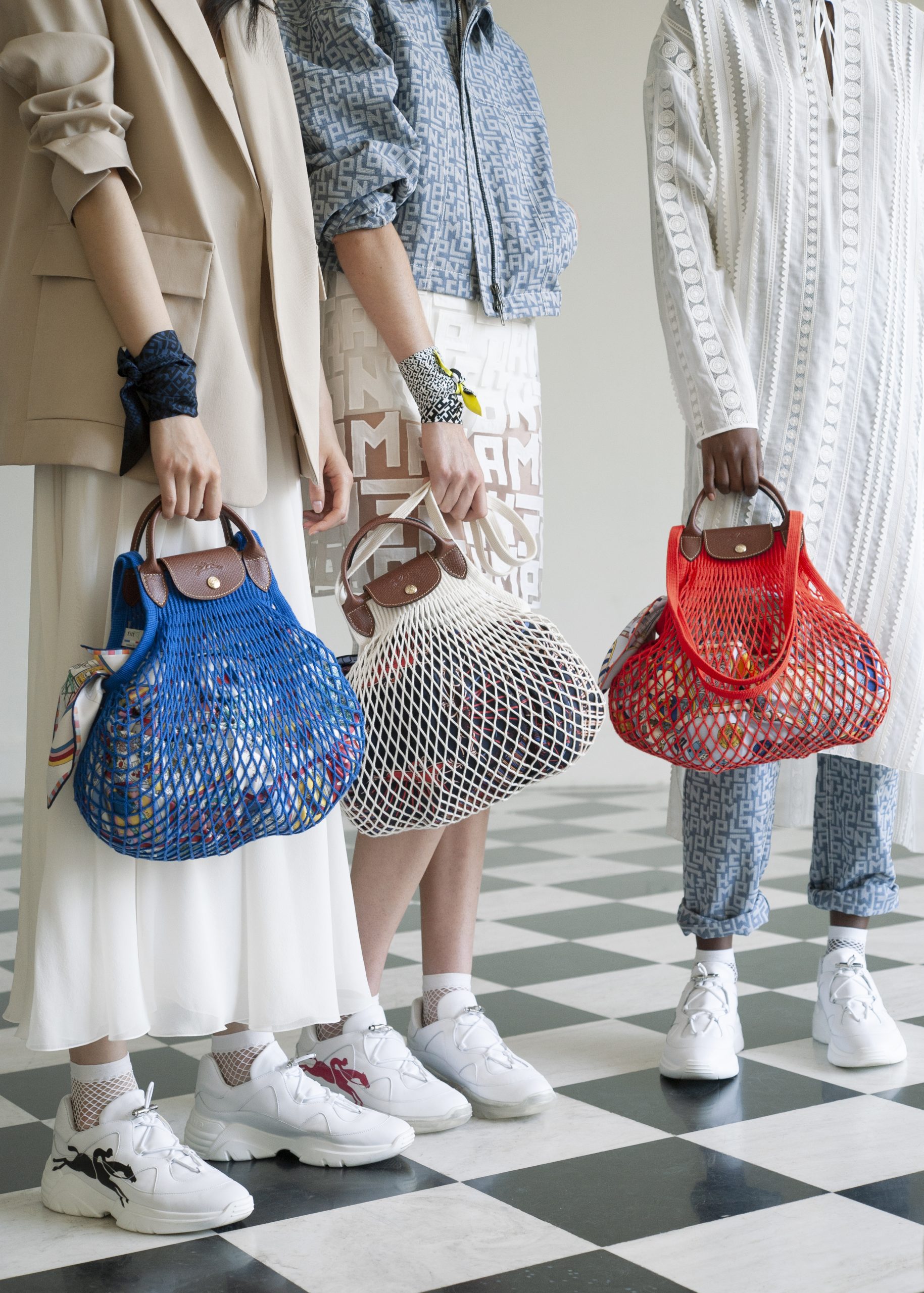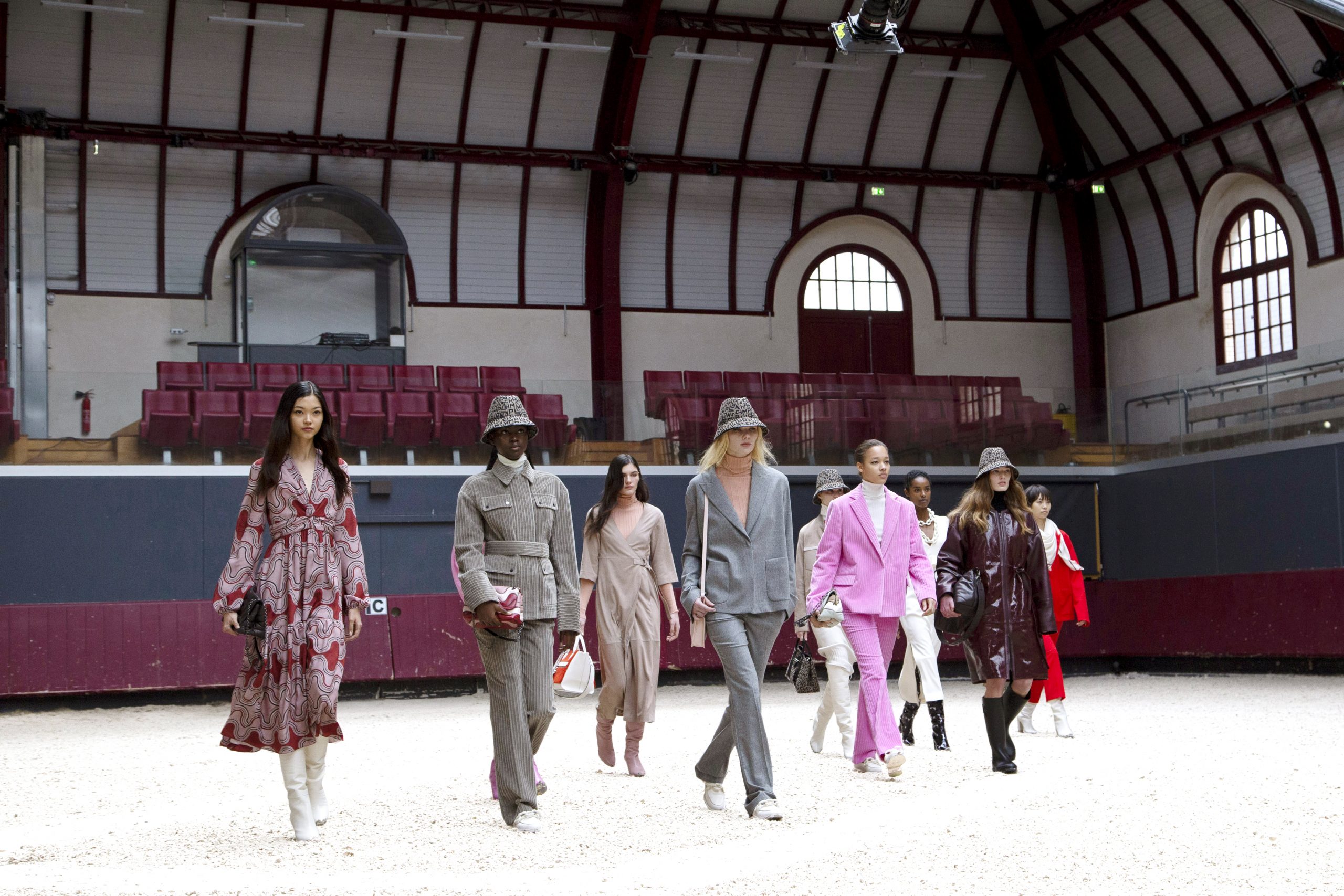
Leaders
Longchamp CEO Jean Cassegrain: “We Need To Continue To Stay Relevant.”
by
Limei Hoang | April 19, 2021
Longchamp CEO Jean Cassegrain talks to Luxury Society about how the company’s core brand values help the French leather goods company to remain relevant today, why experimentation is key to its success and what his long-term goals for Longchamp are.
To say the name Longchamp, is to instantly think of its signature handbag Le Pliage, a foldable tote with smart leather trimmings that can be folded down to the size of a paperback book when needed.
It is this kind of flexibility that has served the privately-owned French leather goods maker well over the years, as its willingness to experiment and adapt with the times has ensured it has remained relevant to younger consumers whether that be through its frequent collaborations with artists, brands and celebrities or launching a range of eco-friendly bags. When it comes to tapping into consumer trends, Longchamp rolls with the times.
It all boils down to the company’s core values of authenticity and energy, explains Longchamp Chief Executive Jean Cassegrain. On one hand, the company is anchored by its heritage and knowledge of craftsmanship yet on the other, there is a focus on energy, dynamism and the need to keep pace.
“One of the things that we have succeeded in doing is to stay current, and to always be contemporary and adapt to the times. We have always been able to be in the moment and to be relevant to each period of time,” Cassegrain told Luxury Society in a phone interview.
“It's one of those things that we very much believe in terms of management practices, to try a lot of things,” he continued. “So, we fail a lot but we try a lot and sometimes we find success and then we try to ride on that success. It's a trial and error process with a lot of misses and then a few hits, which is what makes us last and what makes us still relevant after 70 more years.”
What drives Cassegrain and the rest of his family’s long-term view is being able to continue its legacy for the next generation. “Our interest is to build the company and build a brand, so that it is still there in one or two generations from now,” said Cassegrain. “It's really a long term view and those are not just words. It materialises in the decisions that we make. We know some of them are going to be costly or not the most efficient today, or even this quarter but maybe will bear fruit in the long term.”

Indeed, over the past few decades, the family-run company – which consists of Cassegrain as chief executive, his sister Sophie Delafontaine as artistic director and their younger brother Oliver Cassegrain as managing director of US retail – has worked hard to transform itself into an international accessories business; expanding into new markets like China and the United States, building up its e-commerce presence as well as adding new product lines like ready-to-wear and shoes.
While Longchamp does not disclose financial figures, a report from Deloitte estimated the company generated $581 million in sales in its 2019 financial year.
But when the global pandemic hit and the lockdowns the world over were announced, Cassegrain found himself having to close its entire distribution network. Longchamp, which directly manages 300 points of sale and is heavily reliant on touristic spending, was hit hard.
“It has been horrible,” said Cassegrain of the effects the pandemic. “To be honest, I don't know any other word to describe it. We have been very, very deeply affected by the pandemic. And also, on a personal level because my father and the President of the company passed away in November from COVID. But on the top of that, on a purely business point of view, it has been extremely difficult.”
Since then, the company has had to manage multiple store re-openings and re-closures of its network, and currently at the time of writing, France - which accounts for 30 percent of sales and is its largest market- was under yet another lockdown to curb the further spread of COVID-19.
Cassegrain highlights that the group has managed to see some positive elements in its business. Some local markets are performing well, like France and China and its online business more than doubled from last year. And while the company now has the processes in place to deal with ongoing challenges of global restrictions, the current situation remains uncertain.
“It's not the same thing, but it's in a way it's even worse because it's, it's like a never-ending story. It's the same for us, as it is for everybody else. We all hope that is going to be over, but it keeps on being longer and taking more and more time to come back.”

Despite this, Cassegrain said his focus was ensuring that the company was delivering a strong and consistent message about the brand across all markets, through actions like staging its autumn/winter 2021 show (digitally, of course), unveiling its latest collaborations with brands like Emotionally Unavailable, Filt and Pokémon and introducing a new line of bags called The Brioche.
“Paris Fashion Week and Ready-to-Wear for us, it's a very important element of our strategy because it helps to embody the brand,” said Cassegrain. The silhouette, the looks, they give more reality to the brand, they send a clear image of what we are, more than simply the bags. It's more difficult to express the personality of the brand, through just the bags, even in our stores. Ready-to-Wear is brings some dynamism and it's also a way to give a clear rendering of how we see the Longchamp woman. This still continues to be the core of our strategy.”
Looking forward, Cassegrain remains pragmatic about the challenges that lie ahead. The business clearly has not recovered yet due to the significant falls in tourism, and he expects it will take a significant amount of time to fully recover.
“We don't expect the tourists flow to come back to 2019 level, or even until 2023 or 2024, that's based on the forecast from the airlines and the airports. Without the tourist component of our activity, we will remain affected.”
“We cannot afford to neglect any market, I think we need to continue to develop the brand across all markets,” he added. “We have a specific interest for the French market, which is our home market and we are the leading brand in France and we want to remain so. It's very important to continue to grow and develop our French customer base.”
China also remains a priority for Longchamp. “We also have a strong interest for the Chinese customer because it’s from them that most of the growth will come from in the coming years. So, these two markets are our priority. But it does not mean that we are not making any effort to develop our other geographies as well.”
In the meantime, Cassegrain is preparing for what he hopes is the eventual return to normalcy and seeing customers in stores. “The customer experience in physical stores is becoming even more important than before,” he said.
“Every detail counts and every detail can be a source of emotion, whether it's positive emotion or sometimes a negative emotion as well. It's really a 360 degree approach… particularly as digital grows and becomes more efficient, stores will have to bring something else to the table other else than efficiency because digital is always going to be more efficient. Stores need to bring emotion. And that's I think the direction that we are heading in, to make sure that the emotion is there.”
In the meantime, the challenges of COVID-19 remain the biggest concern for Cassegrain, although he remains optimistic that the luxury industry will overcome the hurdles.
“Everybody still enjoys having a nice product in hand,” he said. “Visiting a nice store, having nice experience and I think even more and more people are also reaching a level of financial wellbeing. That allows them to indulge in buying luxury products.”
“Now, of course, there are more long term challenges: the tools we also need to address to stay relevant to the younger customer,” he noted. “Switching everything to digital progressively. These are more structural challenges but I think our industry is used to dealing with that. A lot of the luxury brands have been around for several generations, so they have undergone many changes and many different periods. I'm not too worried about the fact that the industry will be able to overcome the current challenges but we'll take a little bit of time until we can fully recover.”

